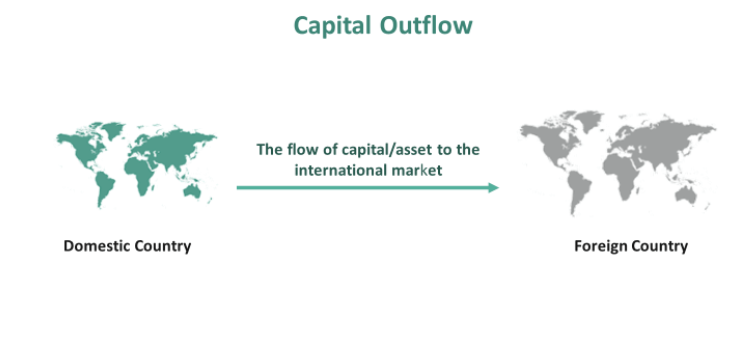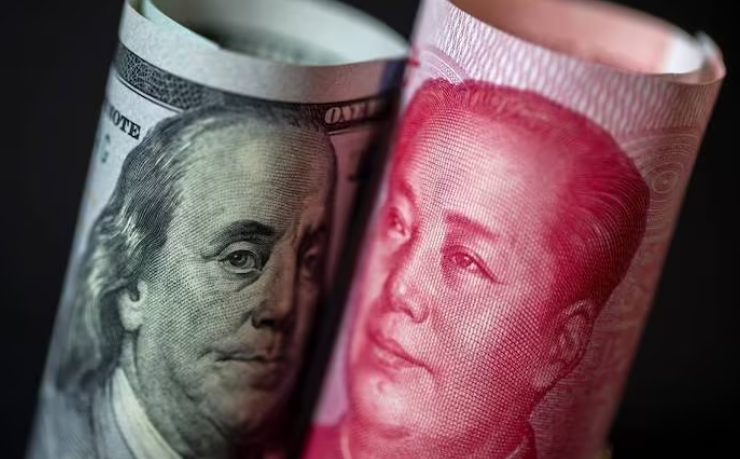Foreign money outflow: In fact, foreign investors sold more Indian stocks in January than in any other emerging market. While India experienced $3.2 billion in outflows, it sold $1.1 billion worth of Brazilian shares and offloaded $870 million in Thai shares.
Foreign portfolio investors (FPIs) withdrew more than $3 billion from India’s equities market in January 2024, citing lower-than-expected results from large private lenders and rising treasury yields as reasons to minimise risk exposure.
In fact, foreign investors sold more Indian stocks in January than in any other emerging market. While India experienced $3.2 billion in outflows, it sold $1.1 billion worth of Brazilian shares and offloaded $870 million in Thai shares.
ALSO READ: Pfizer Tops Profit Projections While Decreasing, Covid Company Loses Less Money Than Anticipated

According to Bloomberg data, South Korea got $2.3 billion in inflows, while Taiwan saw $1.4 billion in buying. In reality, offshore investors sold shares in January 2023 and 2022 as well. FPIs withdrew $3.7 billion from the Indian market in January of last year and will do so again in 2022, withdrawing $4.8 billion. However, foreign investors’ selling of stocks in January follows significant buying in the previous two months.

After purchasing $2.3 billion in shares in November, FPIs invested slightly more than $7 billion in December, bringing the total for 2023 to $21.4 billion. In January, the yield on the 10-year US Treasury bond rose by 13 basis points (bps) to 4%. After falling to 3.8% in December, the yield reached a high of 4.2% on January 24.

Nonetheless, it is worth noting that over a third of foreign portfolio investors’ funds have been concentrated in the financial services industry. According to data provided by National Securities Depository Ltd. (NSDL), the assets under custody (AUC) in financial services were at $237 billion in mid-January, while the total AUC of FPIs in equity stood at $758 billion on January 15, 2024.

However, purchases by domestic institutional investors (DIIs) totaling $3 billion during the month helped to limit losses in the benchmark index. The Nifty50 closed the month slightly lower at 21,725.70 points, down 0.03%.
| FPI flows into equity ($ bn) | |
| Country | Jan-24 |
| India | -3.15 |
| Brazil | -1.07 |
| Thailand | -0.87 |
| Vietnam | 0.05 |
| Philippines | 0.08 |
| Indonesia | 0.53 |
| Taiwan | 1.41 |
| S. Korea | 2.25 |
| Source: Bloomberg | |
Frequently asked question
What is foreign currency outflow?
Capital outflow refers to the movement of capital from a country to another. Capital inflow, on the other hand, refers to the movement of funds from foreign countries to the home country. Political and economic instability are the most common causes of capital outflow.
What is foreign capital outflows?
Capital outflow refers to the movement of funds from one country to another. Capital inflow, on the other hand, refers to the transfer of funds from foreign countries to the home country. Political and economic instability are the primary causes of capital outflows.
What is capital inflow and outflow?
Notes: Capital inflows refer to foreigners’ net purchases of domestic assets. Capital outflows are equal to net foreign asset acquisitions by domestic agents. Official flows are defined as the central bank’s net purchases of reserve assets plus development aid received. All capital flows are scaled according to trend GDP.
Click here to check out the latest post on Instagram.
Also read: Unlocking Efficiency: Outsourcing Tasks To Freelancers And Contractors
image source: google




































